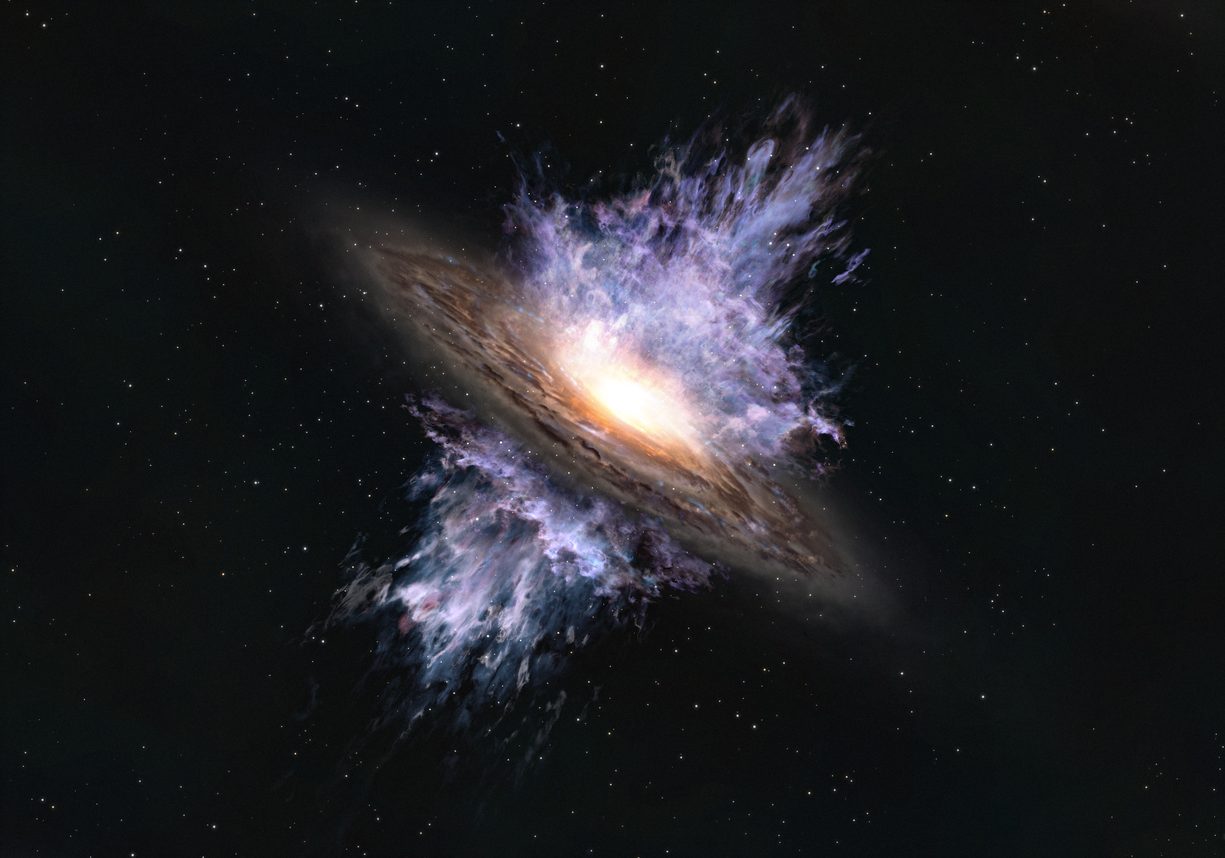
A massive maelstrom that raged in the universe's youth could help scientists better understand how galaxies and their central black holes interact.
Most, if not all, galaxies harbor a supermassive black hole at their core. Our own Milky Way has one, for example — a behemoth known as Sagittarius A*, which is about as massive as 4.3 million suns.
Galaxies and their supermassive black holes have a tight relationship. The objects seem to evolve together, perhaps through the action of "winds" that the central black holes generate as they gobble up dust and gas. The black holes' gravity accelerates this infalling stuff to incredibly high speeds, causing it to release energy that can blow other material outward.
Related: Black holes of the universe (images)
"The question is, when did galactic winds come into existence in the universe?" Takuma Izumi, a researcher at the National Astronomical Observatory of Japan (NAOJ), said in a statement. "This is an important question, because it is related to an important problem in astronomy: How did galaxies and supermassive black holes co-evolve?"
Takumi led a team of researchers that dug into these questions. Using the NAOJ's Subaru Telescope in Hawaii, the scientists found more than 100 galaxy-supermassive black hole duos that lie at least 13 billion light-years from Earth, meaning they existed more than 13 billion years ago. (It's taken that long for their light to reach Earth.) The universe was young then, relatively speaking; the Big Bang occurred about 13.82 billion years ago.
Next, the team studied the motion of gas within these galaxies using the Atacama Large Millimeter/submillimeter Array (ALMA), a network of powerful radio telescopes in Chile. The ALMA data revealed that a galaxy called HSC J124353.93+010038.5 features a galactic wind traveling at about 1.1 million mph (1.8 kph) — fast enough to propel lots of material outward and hinder star-formation activity.
Breaking space news, the latest updates on rocket launches, skywatching events and more!
HSC J124353.93+010038.5 lies 13.1 billion light-years from Earth. And that makes it a record breaker: The earliest known galaxy with a sizable wind had been an object about 13 billion light-years away, the researchers said.
The new results, which were published online in The Astrophysical Journal on June 14, shed further light on the very tight, and very old, bond between galaxies and their central black holes.
"Our observations support recent high-precision computer simulations which have predicted that coevolutionary relationships were in place even at about 13 billion years ago," Izumi said. "We are planning to observe a large number of such objects in the future, and hope to clarify whether or not the primordial coevolution seen in this object is an accurate picture of the general universe at that time."
Mike Wall is the author of "Out There" (Grand Central Publishing, 2018; illustrated by Karl Tate), a book about the search for alien life. Follow him on Twitter @michaeldwall. Follow us on Twitter @Spacedotcom or Facebook.
Join our Space Forums to keep talking space on the latest missions, night sky and more! And if you have a news tip, correction or comment, let us know at: community@space.com.

Michael Wall is a Senior Space Writer with Space.com and joined the team in 2010. He primarily covers exoplanets, spaceflight and military space, but has been known to dabble in the space art beat. His book about the search for alien life, "Out There," was published on Nov. 13, 2018. Before becoming a science writer, Michael worked as a herpetologist and wildlife biologist. He has a Ph.D. in evolutionary biology from the University of Sydney, Australia, a bachelor's degree from the University of Arizona, and a graduate certificate in science writing from the University of California, Santa Cruz. To find out what his latest project is, you can follow Michael on Twitter.
